Dusk. The road winds through this cold desert, snow piles tucked in the lee of every sagebrush like the white bottoms of the pronghorn that call this place home. Around a bend, there are fields, dry stubble dotted with mule deer. A hundred, at least, in this one spot.
With sudden purpose, a doe hops the fence and enters the right-of-way. Several others lurk behind, waiting to see what their leader will do. Her antenna-like ears are perked, scooping the hum of the car. She hesitates.
Maybe she will; maybe she won’t. I slow to give her the pause to make her decision. Her safety depends on it. So does mine.
And herein lies the premise: if drivers are moving slowly enough, they will have time to avoid hitting large animals, such as deer and pronghorn, on the road. Drivers who are driving more slowly have a shorter stopping distance – the time it takes to see an animal, hit the brake, and stop.
This premise underlies a question I have heard countless times: why don’t we just reduce the speed limit to solve the problem of animals getting hit by cars?
This is a problem that impacts some 6,000 animals every year here in Wyoming, and 1-2 million more large animals nationwide. The simplicity and logic are naturally appealing. If we can just get people to drive more slowly, we can solve this problem cheaply and easily.
But can we accomplish either? My short answer, based on years of research, is “not likely.”
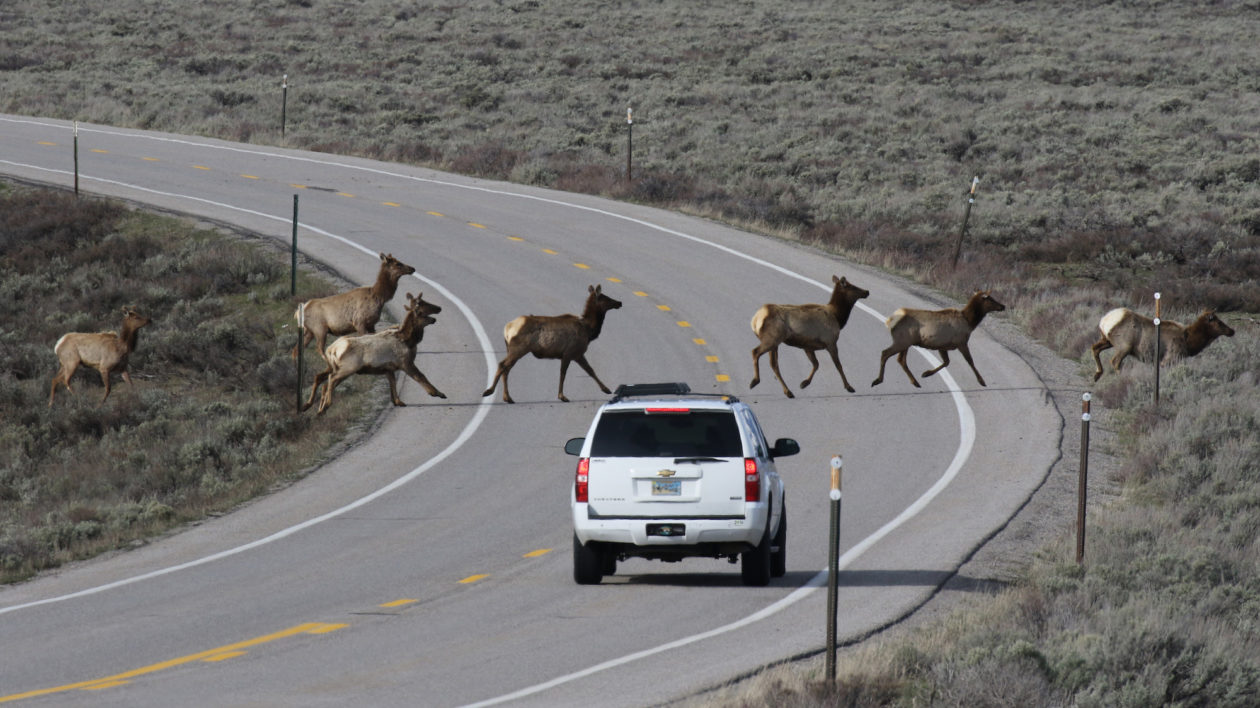
Reducing the Speed Limit Reduces Speed – But Not By Much
I recently wrapped up a large experiment where we tested the effectiveness of reducing the speed limit as a means of reducing wildlife-vehicle collisions.
We found that drivers did slow down, but only by a few miles per hour. We found no fewer wildlife-vehicle collisions or “near misses” (narrow escapes for deer and driver). Instead, we found that the number of cars on the road, rather than the speed limit, mattered quite a bit to deer.
Surprisingly, there has never been a study quite like this before. My team worked with the Wyoming Department of Transportation (WYDOT) to reduce the speed limit from dusk to dawn – when most wildlife-vehicle collisions occur – from 70 mph to 55 mph on six stretches of highway in Wyoming.
From my prior work, we knew that these were “hotspots” of high collisions rates where highways bisect mule deer winter range or migration corridors.
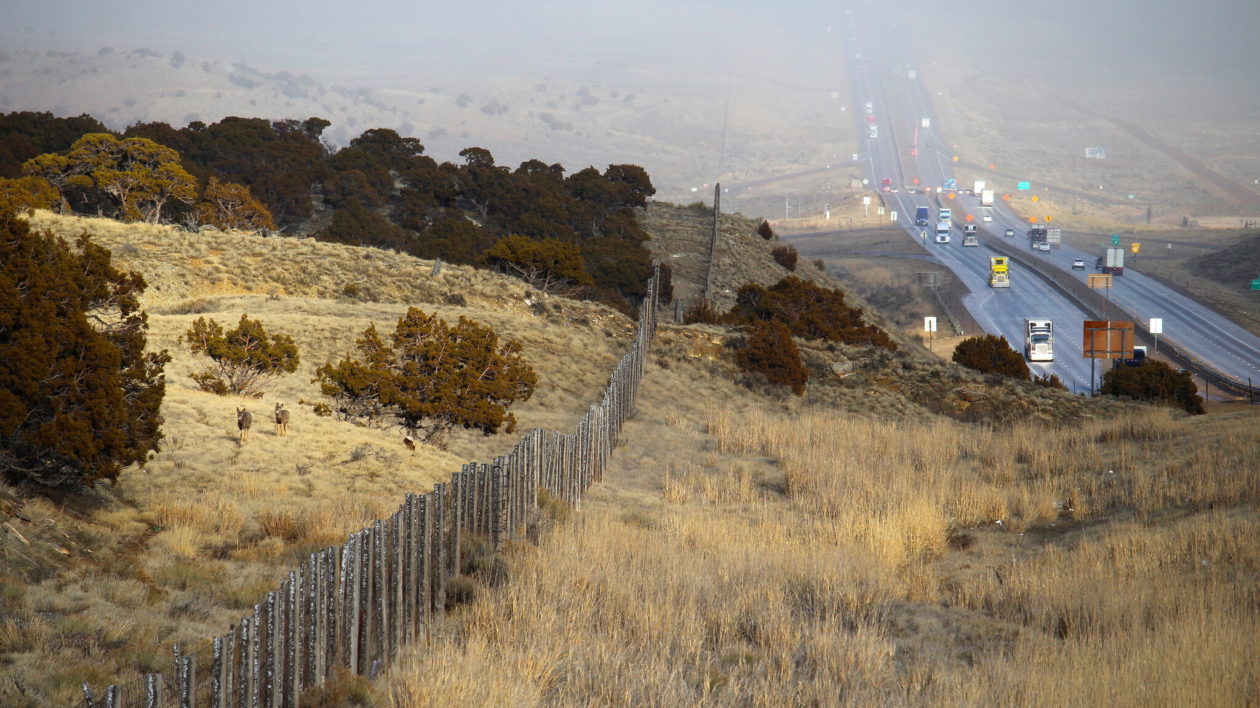
Over two long, cold, Wyoming winters, my team braved the windswept sides of the roads to collect our data. We used radar recorders – handy little black boxes mounted on posts – to record the speed of every vehicle that went by.
We worked with WYDOT and Highway Patrol to get records of every collision that occurred and every dead deer that was found. And we used infrared thermal scopes jerry-rigged to record video footage of deer trying to cross the roads.
The essential results were quite simple: drivers very clearly slowed down when the speed limit was reduced, but only by about 3 to 5 mph – nowhere near the 15 mph reduction in speed limit.
The number of deer hit wasn’t affected by the lowered speed limit, which makes sense; if drivers hardly slowed, why would we expect any fewer collisions or dead deer?
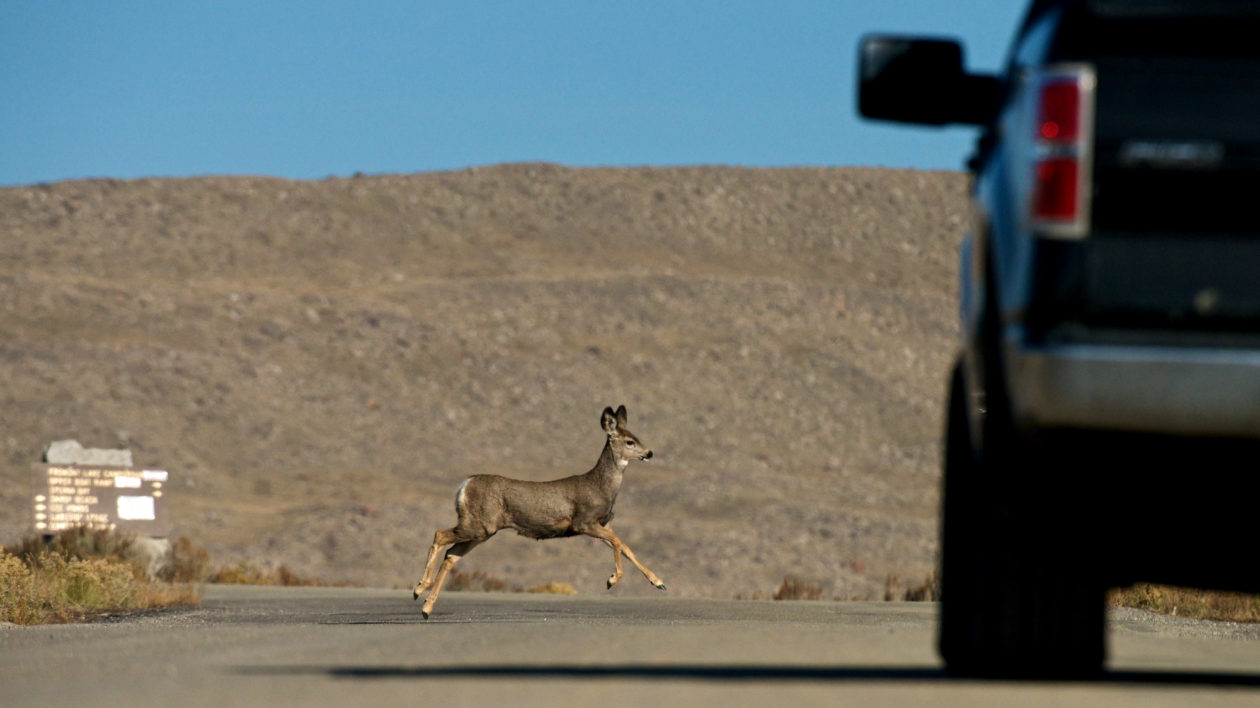
A Break in Traffic
These stark numbers answered our main scientific questions. But we found the real stories in the video clips – stories that played out in the dark, largely unseen by the passing vehicles.
Here we saw deer hopping fences like popcorn kernels. Deer waiting, waiting, waiting for the stream of traffic to break, sticking a hoof in the road, hesitating, turning back, circling around to try again. A doe hit, spinning like a top on the hard road surface, her companion coming to sniff the lifeless friend and wavering there, seemingly uncertain where to go next.
These scenes bring the deer’s plight to life, but they also yield important information. From the footage, we found that deer had to make more attempts to get across the road the more vehicles were present. If the deer had to make four or more attempts to cross, she had a 50 percent chance of giving up all together.
We also found that deer need at least 30 seconds between consecutive vehicles to cross the road safely. Fewer than that, and they almost always wound up getting hit or in a dangerous situation.
More than 60 seconds between vehicles, and the deer almost always crossed safely. This is extremely valuable information because it tells us that, for most of every 24-hour cycle, on most roads in Wyoming and anywhere more populous than Wyoming (okay, so pretty much anywhere), the traffic volume is too high for deer to cross the road safely.
That means that getting people to drive more slowly – even if you could – may never be enough.
The reality is that roads are a major impediment to animal movements. More than the animals that get hit, I worry about the animals that don’t even try to cross. They are the hidden casualties of an increasingly fragmented world that is cutting them off from the food and habitat they need to thrive.

How Does the Deer Cross the Road?
All of this may sound very pessimistic, but I don’t think it is. The good news is that we have a very effective solution to make roads safe for wildlife to cross – and safe for drivers too. Overpasses and underpasses built for wildlife allow animals to cross the road without risk – bringing collision numbers down 80 to 90 percent and enabling animals to move relatively freely.
These “crossing structures” are costly, but they work, and the cost of doing nothing racks up millions of dollars per year in vehicle damage, human injuries, and lost hunting revenues. Knowing that the inexpensive alternatives – as appealing as they are – don’t work, helps to galvanize people around the need for the solutions that do.
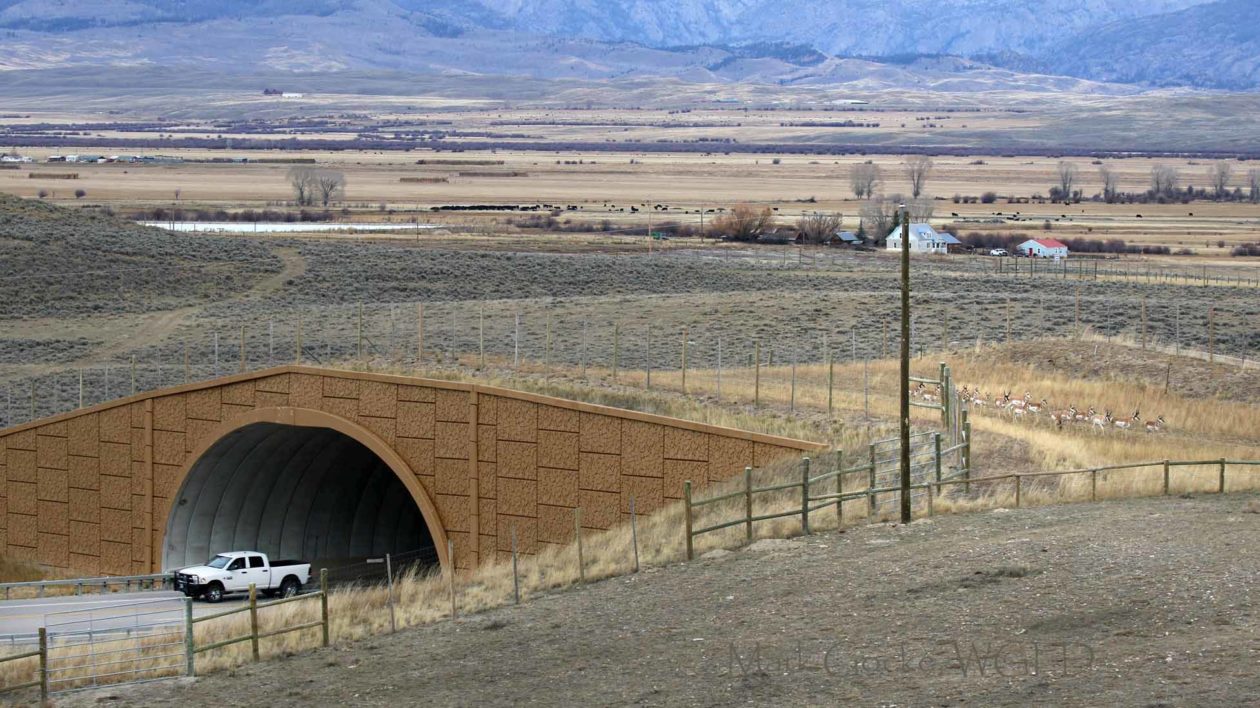
This year in Wyoming, various efforts have raised more than $25 million towards crossing structures. Unlike many conservation challenges, this is one we can engineer our way out of. We can help conserve some of the world’s longest large mammal migrations. We can connect habitats better, making flora and fauna more resilient to climate change and other threats.
I still drive slowly at night through high animal-use areas, and I advise others to do the same. Realistically, we may never get crossing structures in all the places that really need them, just as we may never get all drivers to slow down. But I hope that through research like this, we can make these decisions based on data and not just wishful thinking.
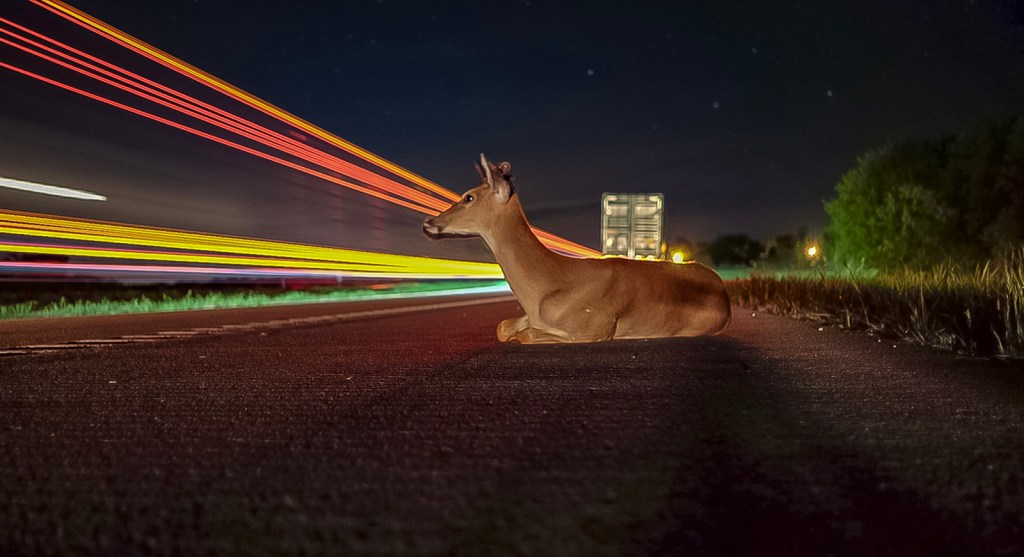

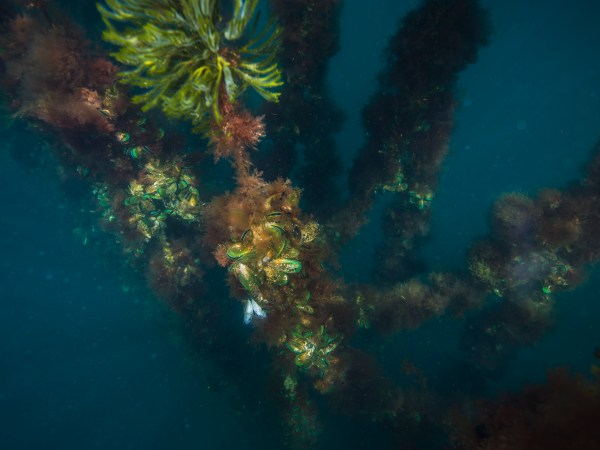

I would like to see Wisconsin come up with something similar. We have too many collisions with deer in fall and spring.